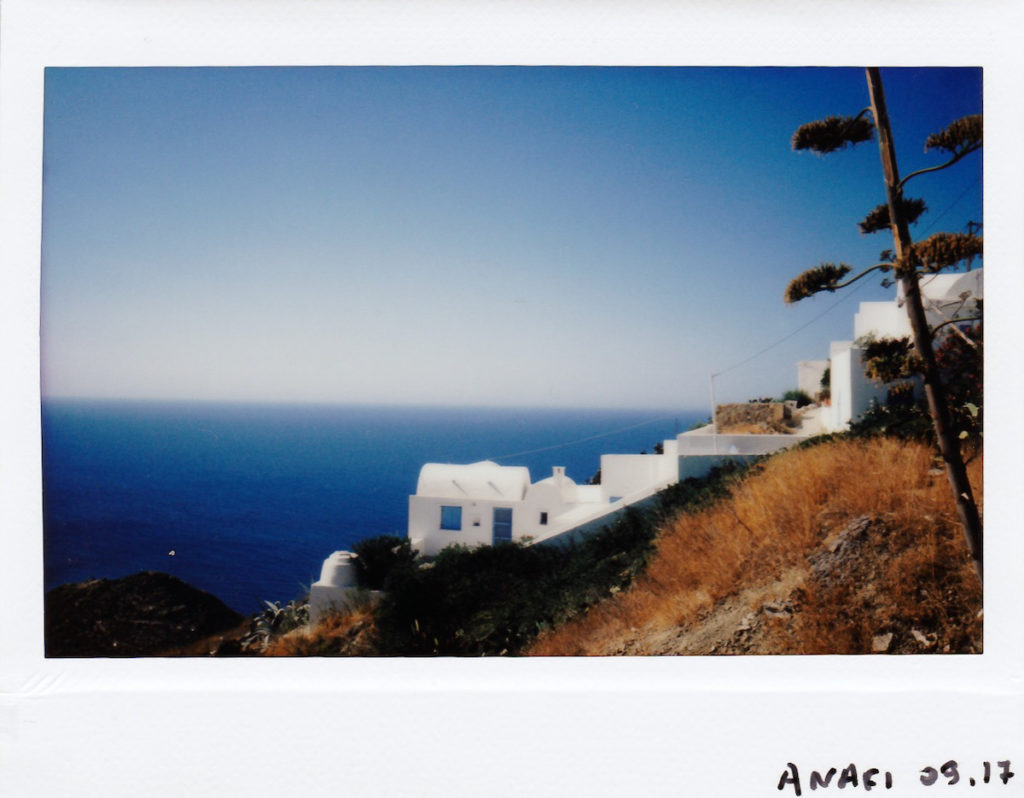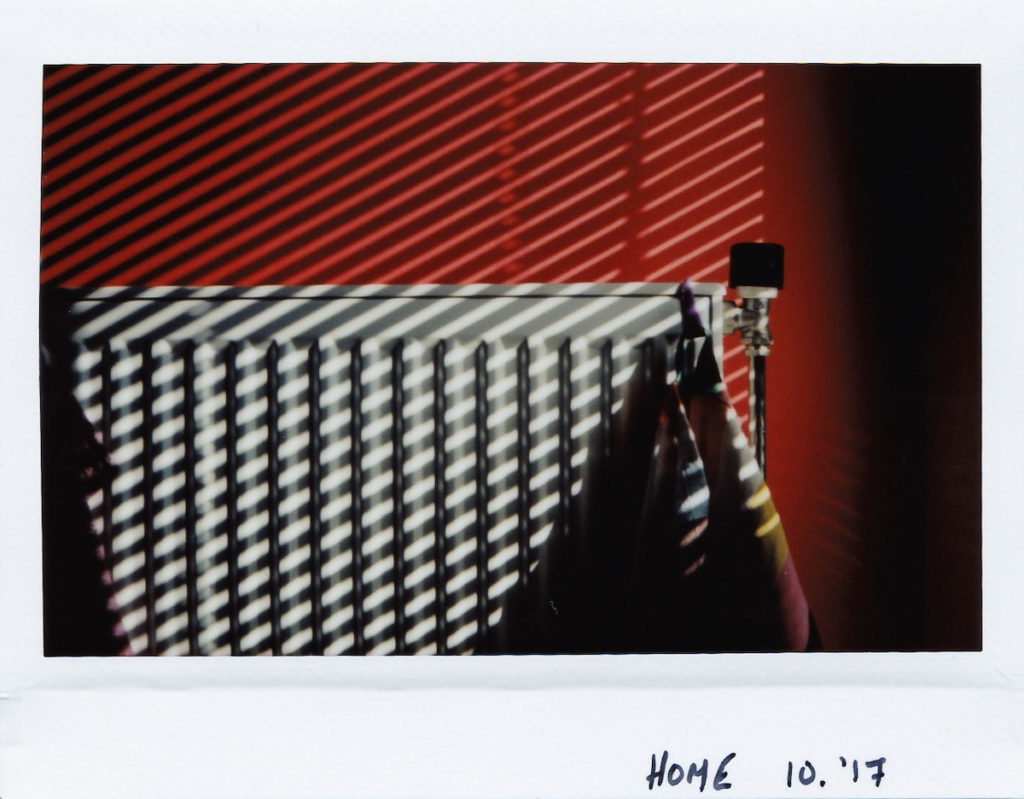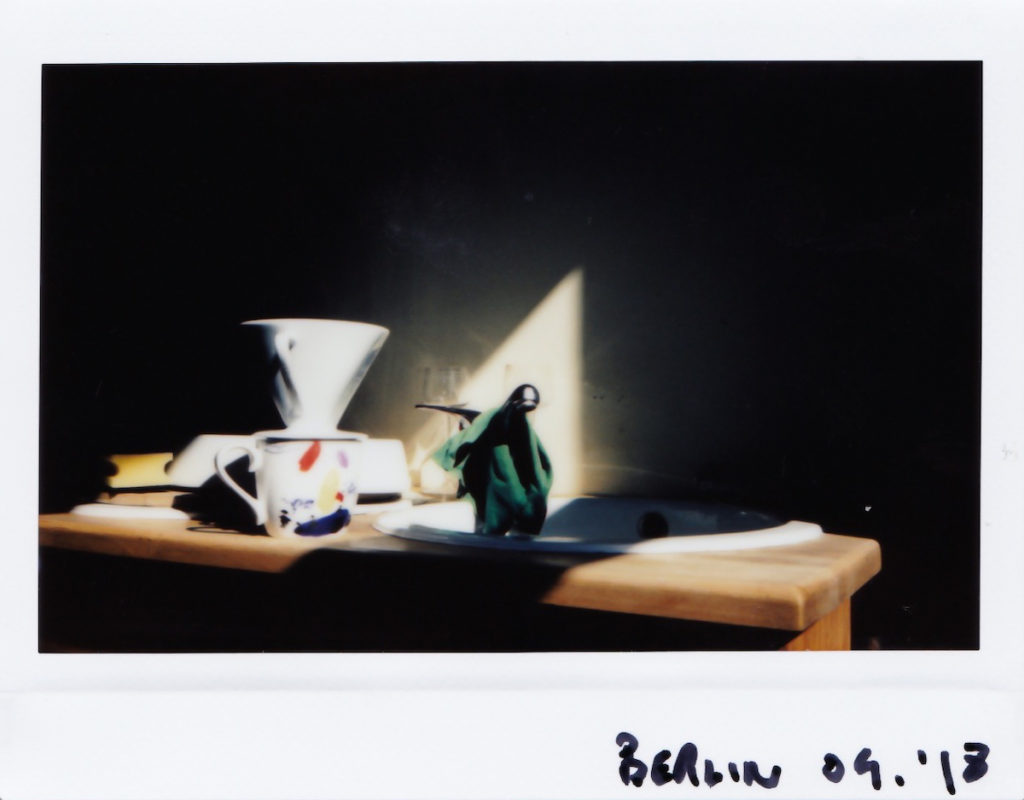Traveling with an instant camera (ex. Polaroid, Fuji Instax, etc.) can be both a curse and a blessing. Instant cameras will add weight to your luggage, but when you return home from your journey, you’ll have a couple of cool printed photos. In these (usually) bulky objects, one can observe photography’s whole history: loading film, taking a picture, printing. Everything happens in one place, within the camera body, and that’s what probably makes instant photography charming.
I often have an instant camera with me when I’m traveling. For more than eight years, I’m taking photos with my Fuji Instax Wide. Of course, the fact that it can print larger images comes at a cost: the camera feels big in hand, occupies a lot of space in my hand luggage, and discourages me from constantly having it with me. The photos are not that sharp -but as time goes by, my travel memories don’t look that sharp either. Well, does it really deserve to have an instant camera with you when traveling?
A couple of years ago, I came across a sketch, which could make a funny meme today. It highlighted the differences between an analog camera and a current DSLR. Next to the film camera, I read: “Photos to take: 36. Photos to keep: 8”. Then, next to the DSLR, it said: “Photos to take 2000. Photos to keep: 8”. That witty statement somehow highlighted the zeitgeist: we take loads of photos, but we become less thoughtful. It feels like we don’t pay that much attention to the image and photograph like there is no tomorrow.
Polaroids and instant film cameras can make us more thoughtful. The film is not cheap (it starts at approximately 10 euros for ten photos) and requests our attention. Although you can’t easily go wrong with the settings, it’s not unlikely to get an awful picture. If I had to add a line about instant cameras in the statement mentioned above, I’d say: “Photos to take: 10. Photos to keep: 2”.
So, for me, it definitely deserves to carry my Fuji Instax when traveling. In an era that everything becomes digital, it’s nice to have a few tangible objects. Regarding the polaroids, it’s always comforting to see them. Yes, memories become softer as time goes by, but it feels that they are somehow still solid after looking at the polaroids.
*See my Polaroid Diaries and read my OneStep+ review.
Where I’ve taken photos with my instant camera

When I wrote about the mindset of the Xennial traveler, I mentioned why I carry an instant camera while traveling. By taking the Fuji Instax Wide in my journeys, I also feel that I carry childhood innocence with me. The polaroid photos seem to paint instantly a version of what we photographed. In digital photography, we can post-process the image endlessly, and in the end, it might look better than what we saw. But the polaroid presents a more blurry version, a moment that always remains unsharp. Instead of calling it an instant camera, one could call it instant nostalgia.
For several years, I’ve been taking the Fuji Instax Wide everywhere: from Greek islands to Finland, from Minsk to eastern Sicily. What I still remember, though, is taking photos with my instant camera in Transnistria. You see, Transnistria is an unrecognized country, and you can also be suspected as a spy if you take pictures of public buildings. So carrying that bulky camera on the roads of Tiraspol might not have been a wise activity. People looked at me, a couple of them asked me questions, but in the end, I was thrilled to photograph a country that might not exist forever.
How to use an instant camera

What makes a Polaroid attractive is its ease of use. Although some of the most modern cameras feature advanced settings, instant cameras are straightforward to use. There are just a couple of dials on the camera and only a few things to consider.
After loading the film and turning the camera on, in most of the instant cameras, you’ll have to deal with two settings: distance and exposure. I’ll write down the settings for my Fuji Instax Wide, but most of the cameras follow the same pattern:
Distance
You have two options for distance:
- From 0,9 meters up to 3 meters. That’s the setting you have to use when taking portraits or things that are relatively close to you.
- From 3 meters to infinity (∞). I’m always using this setting for landscape photography or having more things in focus.
Exposure
On the other hand, you have three options for exposure.
- Light. This setting will bring more light to the photo (most likely +2/3 of exposure). I usually use it when there is not enough natural light in the scene. Keep in mind, though, that if the scene is lit correctly and you shoot with the Light option, the photo will be overexposed. It practically means that the faces in the photo will be too soft and too white.
- Normal. That’s the setting to go most of the time. Shooting polaroids in normal mode will usually give you a more accurate image. The normal mode is also more appropriate for low light situations or when the flash will fire (more on that later).
- Darken. This is a setting that can sometimes confuse you. The Darken mode will add contrast to your photo (most likely -2/3 of exposure). I usually use it under harsh light circumstances, where I want to capture shadows. The images can be significantly contrasty and sometimes underexposed: dark blue skies, black shadows, saturated colors. Use with caution; shooting in Darken mode when the light is not enough might give you a pitch-black image with some shiny dots here and there.
Other things to keep in mind about instant photography

I can’t tell you about the lenses of every instant camera out there, but judging from the one I use, I suspect most of them share similar specs. For example, the Fuji Instax Wide has a 95 mm lens with an f/14. That said, the camera is a bit slow, but at least you can have most things in focus. So, for example, taking photos of people walking by in low light will usually deliver a blurry figure and an in-focus background.
Most of the instant cameras come with built-in flashes. This might sound like a cool thing, but the truth is that whenever the flash fires, the quality of the polaroid is average. One of my Fuji Instax Wide’s biggest downsides is that the flash fires automatically; that said, you have no option to disable it. If the camera decides to use it, you can’t do anything about it. It makes sense to use a flash in indoor shots, but sometimes the flash decides to fire even when you are outside (not on a bright day, though). It honestly pisses me off when I see the flash. Some cameras have this feature; in others, the flash is manual. Before buying an instant camera, do your research.
The film comes in packages of ten, and it’s not cheap. Unfortunately, instant photography can be expensive, especially if you like to shoot polaroids less thoughtfully, like taking smartphone photos. For the Fuji Instax Film, you’ll pay approximately 10 euros for the ten photos package, while for the original Polaroid, prices start from 15 euros per box of 8.
I chose the Fuji Instax Wide mainly because of the size of the photos. The Fuji Mini Film size is 86×54 mm, while the Fuji Instax Wide Film is 86×108 mm, i.e., it’s double in size. Of course, as I stated earlier, the camera is bulky, and it can be challenging to carry it everywhere with you. The truth is that the bigger photos look better, and it’s something that I like to keep. On the other hand, the Fuji Mini photos look way too small.
You can, of course, scan and post-process your photos. I usually scan them at 300 dpi. The images you see here are not post-processed; I have just added a +20 in sharpness because I wanted them to look better on the website. Exposure, saturation, and everything else remained untouched, i.e., what you see here is straight out of camera result.
Which companies produce instant cameras

There are a couple of companies producing instant cameras nowadays. In general, there seems to be a resurgence in instant photography, and as I wrote in my “Instagram Explained” ebook, Instagram might also be responsible for the comeback of polaroids. Below, you will find information about the companies producing instant cameras and links to the respective products.
1) Polaroid. The company that became a synonym for instant photography still produces instant cameras. There are various models, from cheap entry-level cameras to more advanced ones. Subsequently, there is a variety of films. Please keep in mind that not every film is compatible with every camera.
To get a better impression, the Polaroid OneStep+ is one of the latest products of the iconic brand (I just bought one!), while the Polaroid 4695 SX-70 is an advanced model (read my Sx-70 review). As for the film, you can get an overview here.
2) Fujifilm. Together with Polaroid, Fujifilm is one of the most well-known brands for instant photography. Fujifilm has produced a wide variety of products, and it has become a significant player in the field. Fujifilm cameras are of good quality, and the film is cheaper.
I’ve been using the Fuji Instax Wide for a couple of years now, and I’m satisfied with its performance. During the last couple of years, Fujifilm introduced a black and white film for Instax Wide, which is a welcome addition. I have taken several photos in black and white, and they look fine. But I’m a big fan of color photography; therefore, I mainly buy color film. You can see the prices for Fuji Instax Wide Color Film here and the Fuji Instax Wide B&W Film here.
The most popular Fujifilm product, though, is the Mini series. These are significantly smaller instant cameras (i.e., less bulky) using the Mini Film. While the photos are much smaller, the truth is that these are cameras that you can carry easier around. The Fuji Instax Mini 90 Neo Classic, for example, looks pretty and definitely like a thing you’d love to have with you. So if this size sounds more tempting, the Mini series is definitely for you. You can check the prices for the Fujifilm Instax Mini Film here.
3) Leica. This is a relatively new entry to instant photography. The legendary German brand with the famous red dot has produced an instant camera that looks definitely pretty. As is often the case with Leica products, though, the price is high. I have never used the Leica Sofort instant camera, but I might consider it in the future. The Leica Sofort comes in different colors, and you can check the Leica Film prices here.
4) Lomography. Another new player in the instant photography industry. Lomography is a unique new brand producing more advanced instant cameras. Some of them come with Manual mode, which means you have more control over your photographic expression. I haven’t used any of the “Lomo” cameras, but I’m tempted to use one in the future too.
The Lomo’Instant Wide is probably one of the most famous products of the brand and will remind you of the Fuji Instax Wide. But as I already said, it’s an advanced instant camera with more features. Check here the prices for Lomography’s Instant Film.
Official Websites of instant camera companies

If you would like to read more information about each brand, here are their official websites:
Traveling with an instant camera

I often complain about the weight I carry, and traveling with an instant camera adds extra to my shoulders. Although I travel most of the time light, the truth is that my Fuji Instax Wide occupies quite some space. If you add the packages of films that I have to take with me, it sometimes feels a bit discouraging. But, on the other hand, it makes me always happy to carry this bulky camera, which packs the whole history of photography in one click.
I don’t think I’ll stop experimenting with instant cameras. On the contrary, I would like to use more of them. One of my future goals is to go on a journey and just bring an instant camera to see the outcome. I know that I’ll miss my Ricoh GR ii, but for the sake of old times, I’d like to try it.
You see, I can’t even recall the times when I was returning from a journey, and I had a film or two; nowadays, after a 4-day trip, I might easily have 800-1000 photos on my SD card. Then I have to go through the images, delete the bad ones, post-process the remaining ones, and struggle to find a few photos representing the place I visited. In other words, it’s the same story again: taking 1,000 photos but only 8 to keep.
I can’t really imagine how it will feel returning from a journey with just 20-30 polaroids. I think that all of a sudden, my bulky instant camera won’t feel that bulky anymore.
More articles: Of Light and Shadow, Greek islands on a budget, The best travel camera, Berlinale guide
*Get my FREE Travel Writing Course*
Pin it for later

Please share, tweet, and pin if you enjoyed reading Traveling with an instant camera. Your support keeps this website running and all the info up-to-date. 🙂
Last Updated on December 17, 2021 by George Pavlopoulos

